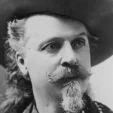The Hanoi Hilton
-
Recently Browsing 0 members
- No registered users viewing this page.
Announcements
-
Topics
-
-
Popular Contributors
-
-
Latest posts...
-
78
Middle East Israeli Forces Push Gaza Evacuations Amid Tragic Attacks
There are probably 'a lot of' instead of 'a few'. 🙂 -
14
Safe entry with 5 years DTV
If you were serious and planning to use an agent then you would already have explained to you how it works. You would exit Thailand and apply for an eVisa DTV as explained earlier. The agent would be assisting with required paperwork. Such as classes for soft power option. You would apply and wait for eVisa in place you opted for. This is nothing like agent assisted annual eg extensions retirement. In any event you would be aware of all this having discussed it with an agent. Clearly you have not. -
29
Landlord didn't pay maintenance fee, now condo keycard locked
If you have a contract and your payment invoice, you can contact the police to gain access! The property management must clarify this with the owner and cannot deny you access. You can also contact the Consumer Protection Bureau (OCPB) to help you and give management a slap in the face!!! In Pattaya is their office in the Cityhall, North Pattaya Road, opposite Lotus!!! https://www.ocpb.go.th/index_en.php -
13
-
14
Crime Myanmar Woman Arrested for Running Illegal Language School
You forgot : Cambodia very very bad Thailand number 1 Yes, that was my general tilt when I responded to @klauskunkel -
13
Best city after 52 years
Females and prostitution can be found in all Countries, its not just Thailand that has females
-
-
Popular in The Pub










Recommended Posts
Create an account or sign in to comment
You need to be a member in order to leave a comment
Create an account
Sign up for a new account in our community. It's easy!
Register a new accountSign in
Already have an account? Sign in here.
Sign In Now